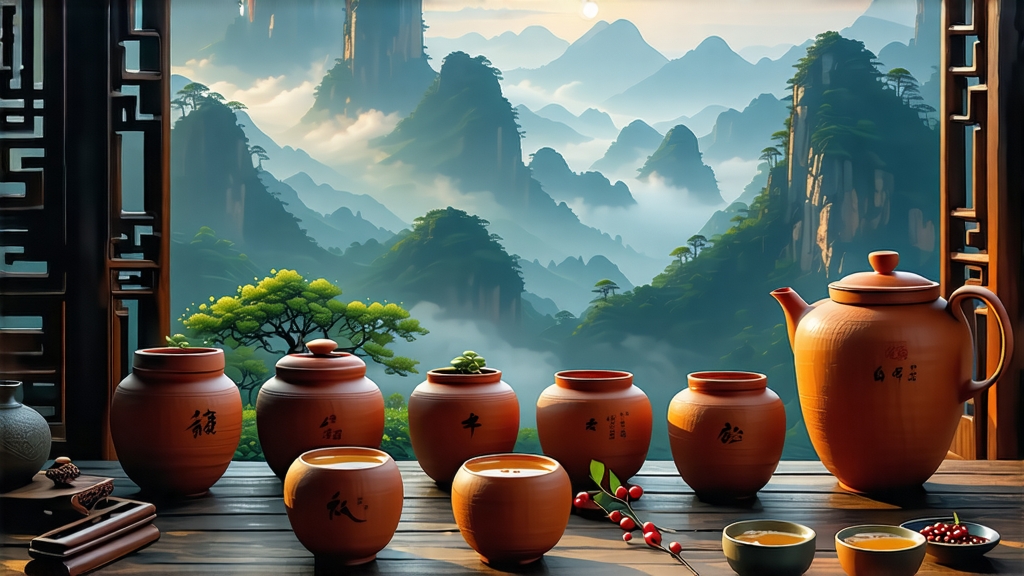
Tucked away in the subtropical highlands of southern China, where mist coils around limestone pinnacles and the Liu River winds through dense camphor forest, a tea has been quietly fermenting for centuries. Liu Bao—literally “Six Forts”—is the least flamboyant yet most voyeuristically complex member of the dark-tea family. While Pu-erh hoards the international spotlight, Liu Bao travels in the cargo holds of connoisseurs’ memories: a rustic, betel-nut scented brick or basket whose liquor glows like burnt topaz and whose finish lingers like pipe tobacco in a mahogany library. This article invites the global tea traveler to unpack that memory, tracing Liu Bao from Ming-dynasty horse paths to twenty-first-century tasting menus, and to learn how to coax its mountain-born soul into a cup.
-
From Military Tea to Maritime Currency
The name “Six Forts” refers to six garrison towns that once guarded the trade corridor between Guangxi and Guangdong. In the late Ming (ca. 1580s), imperial troops were paid partly in compressed tea because silver was scarce and tea was lighter to carry than rice. The bricks, wrapped in bamboo husks and loaded onto mule caravans, fermented during the humid march southward. By the time the tea reached the port of Guangzhou, its originally green character had darkened, mellowed, and acquired a medicinal sweetness prized by dockworkers suffering from malaria. When the British East India Company began purchasing “black tea” in the 1700s, Liu Bao was lumped together with Bohea and Souchong, shipped to Calcutta, and re-exported to London coffeehouses where Samuel Pepys-style diarists noted its “earthie savour.” Thus, centuries before microbiologists isolated Eurotium cristatum, Liu Bao had already circumnavigated the globe as an accidental microbial stowaway. -
Terroir: Where Rocks Breathe Rivers
The micro-region lies between 23° and 24° N, 150–600 m above sea, in Wuzhou Prefecture. Granite soils leach potassium into the groundwater, while camphor and cinnamon trees lace the air with volatile oils that settle on tea leaves. The indigenous cultivar, Camellia sinensis var. sinensis ‘Zhongyezhong’, develops small, thick leaves with a higher ratio of pectin to cellulose—ideal for the wet-pile fermentation that follows plucking. Farmers still practice “three-day withering”: leaves are spread on bamboo racks inside open-walled sheds where mountain breezes alternate with river fog, creating a gentle enzymatic pre-oxidation impossible to replicate in industrial warehouses. -
Craft: The Bamboo Basket Bioreactor
Liu Bao’s processing is a choreography of water, heat, and gravity. After kill-green in a 200 °C wok, the leaf is rolled under foot-powered wooden boards to rupture cells without macerating them. The crucial twist is “wo dui” (wet-piling): leaves are sprayed with mineral-rich spring water, heaped 70 cm high, and covered with jute sacks. Inside this living compost, temperature climbs to 55 °C in 24 hours; thermophilic actinomycetes bloom, followed by a velvet of golden Eurotium. Every two days the pile is turned by hand—a ritual called “fan dui”—allowing oxygen to penetrate and preventing anaerobic spoilage. After 25–35 days the leaf has turned chestnut-brown and exudes a scent reminiscent of dried longan and camphor wood. It is then steamed, pressed into cylindrical bamboo baskets lined with palm leaves, and transferred to dimly lit cellars where it will age for a minimum of three years, often twenty. Over decades the basket breathes; ambient yeasts slowly oxidize residual catechins, converting bitterness into a dark-honey sweetness that Chinese drinkers describe as “chen xiang” (aged incense). -
Stylistic Spectrum
Liu Bao is classified by both vintage and basket size. “San He” baskets (30 kg) are the traditional export unit; “Xiao Liu” (5 kg) caters to modern collectors. Age brackets follow Guangxi commercial jargon:- Xin Cha (new tea, 1–3 years): dominant fungal note, slight wet-pile earthiness, bright astringency.